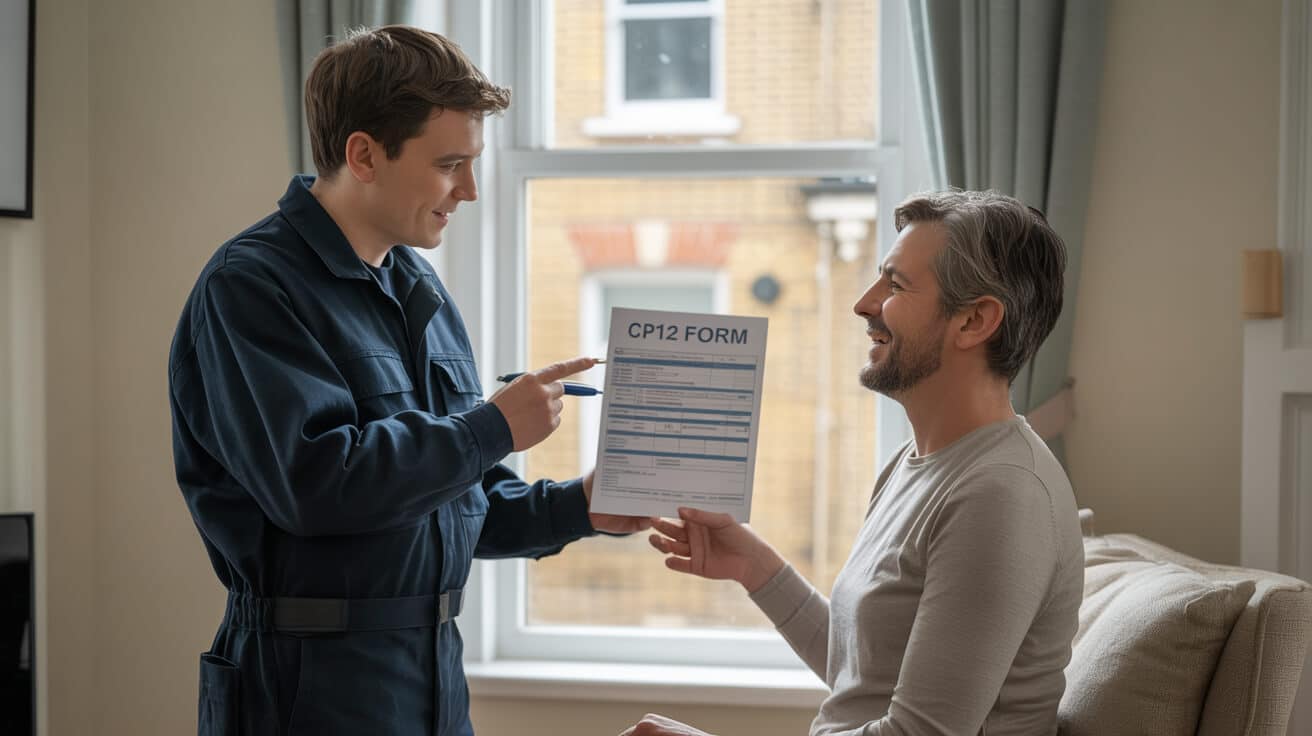 How to Unblock a Sink or Toilet Safely
How to Unblock a Sink or Toilet Safely
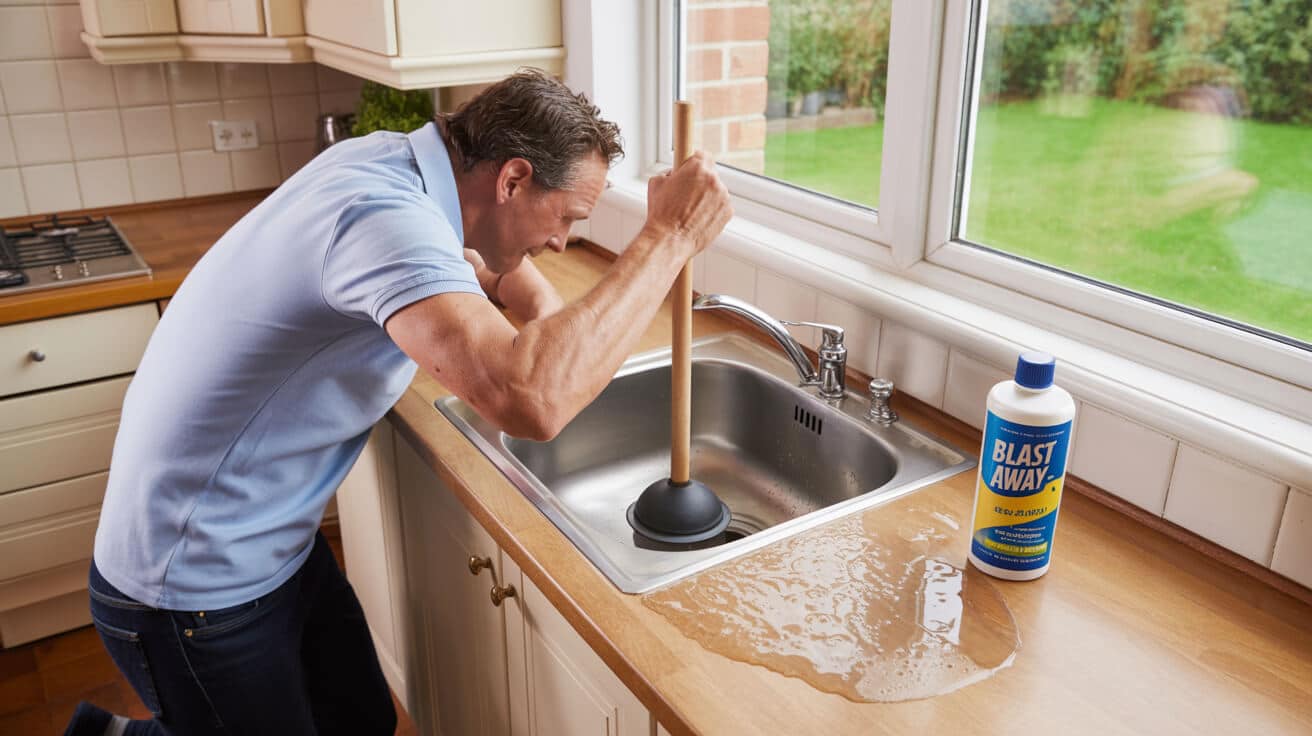
Can You Actually Unblock a Sink or Toilet Without Making Matters Worse—or Attracting Fines?
When your sink or toilet’s blocked, every extra minute risks an overflow—or a much bigger repair bill. Most people feel pressure to fix it fast, but shortcuts often mean split pipes, failed insurance, and headaches with tenants or compliance checks. This is not just a “DIY fix it with boiling water” moment. To keep your reputation clean—whether you’re a homeowner, landlord, managing agent, or council officer—you need a system that’s safer, covers your back, and meets UK plumbing regulations. Plumbing disasters nearly always start with well-meaning mistakes. This guide, grounded in real-world engineer practice and UK codes, will help you clear blockages with confidence—and avoid costly errors.
It’s often the smallest warning signs, ignored or guessed at, that spiral into emergency callouts and insurance battles you never saw coming.
Industry data shows nearly 70% of UK properties face slow drains, blockages, or partial backups every year (Plumbers 4U service log, 2024)—but fewer than one in three cases are handled safely at the first sign. Whether you live on-site, manage multiple flats, let to tenants, or run a business where hygiene is reputation, understanding both warning signs and the right “first moves” will protect your budget, assets, and long-term peace of mind.
What Early Signs Should Trigger Action—and Why Is Speed Safer and Cheaper Than Waiting?
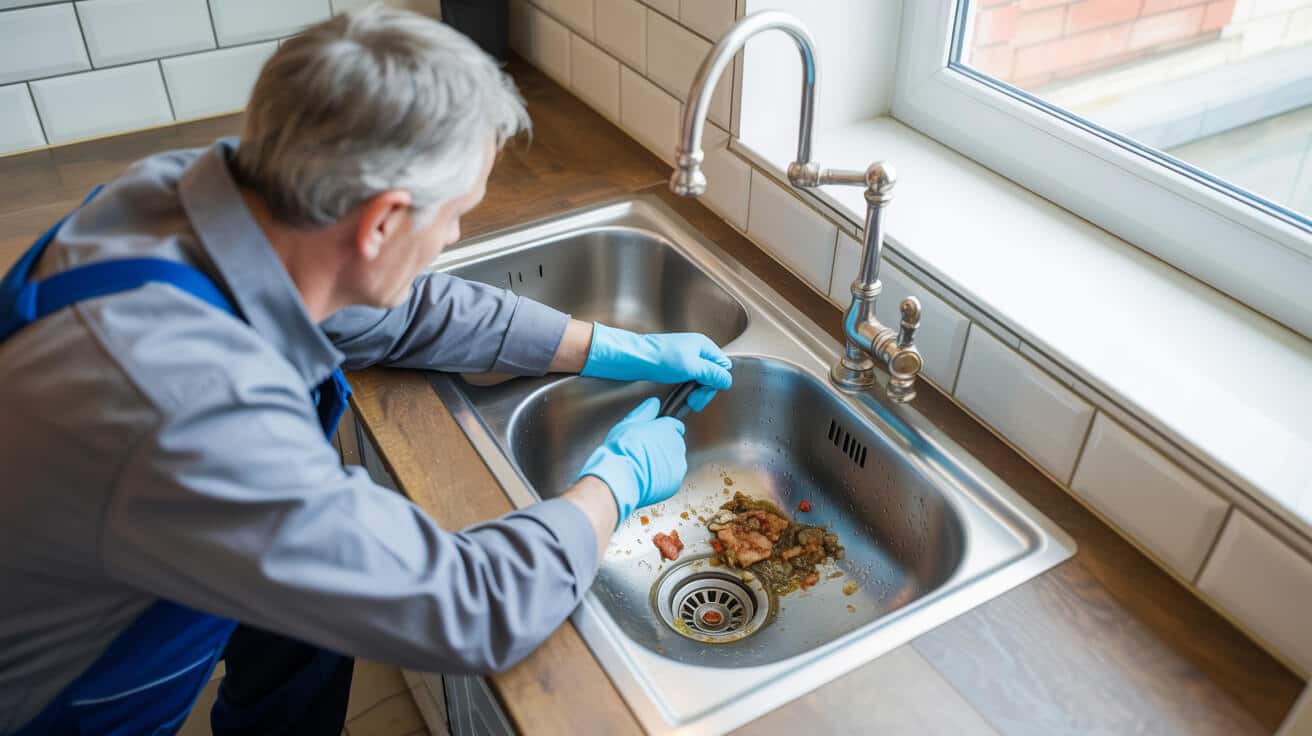
Blockages almost never happen without warning. It’s easy to dismiss a slow drain or ignore a gurgling trap—but these early symptoms are your best chance to act before damage, fines, or loss of property control. Multiple studies confirm repairs are over 300% cheaper when handled at the first stage, compared to letting leaks or backups escalate (Draindoctor, 2023).
Subtle Plumbing Problems You Can’t Afford to Ignore
- Slow draining: Water sits in the sink, basin, or toilet basin after use—classic sign there’s buildup, not full flow.
- Persistent odour: Musty, stale, or sewage-like smells are a call to investigate, especially if they return after standard cleaning.
- Gurgling noises: Air sucked through traps usually means partial blockage or venting issue.
- Water levels rising before draining: If the bowl fills then slowly empties, there’s an obstructing mass.
- Leftover scum or residue: Debris, soap film, or grease signal waste is not fully washed away.
The difference between a simple DIY fix and a ruined floor or denied insurance is usually how well you spot, and act on, these warnings.
Acting early doesn’t just spare you a late-night headache—it reduces risk for families, tenants, vulnerable users, and even lowers your insurance excess by showing you did your duty as an owner or landlord. For professionals, it means keeping maintenance calls efficient and audit logs clean.
Which Blockage Triggers Are Most Common—and Why Guessing the Cause Is a Risk?

Understanding what’s causing the block is the difference between a fix and a wild goose chase. Each property type faces unique risks, and getting it wrong can damage your pipes, your fittings, or your compliance standing.
Most Common Sink and Toilet Blockages—Domestic vs. Commercial
| Cause | Homes (%) | Commercial (%) |
|---|---|---|
| Food / Grease | 41 | 56 |
| Hair / Soap | 47 | 19 |
| Wipes / Sanitary Products | 34 | 42 |
| Pipe/Fitting Defects | 19 | 24 |
Sources: Plumbers 4U service book, Thames Water 2023 (Thames Water).
For most households, oil and hair are top sinners; rental blocks, commercial kitchens, or WCs serving public/tenant areas are hit by wipes and improper flushables. Pipework age plays a part, but so does behaviour: many blockages are “people problems”, not pipe faults.
Why Bad DIY Fixes Make Problems Worse—And Sometimes Illegal
Tempting solutions—boiling water, caustic gels, wires, or rods—are often recipes for trouble. UK regulations warn that:
- Plastic and push-fit pipes warp: even with “just-below-boiling” water.
- Chemical unblockers: can degrade seals, void warranties, and kill helpful bacteria in drains.
- Rods/wires: can puncture joints, force a leak, or jam a blockage deeper—turning a £60 fix into a £600 disaster.
- Commercial and rental properties: face fines if improper works cause contamination, injury, or breach water regulations (WRAS/WaterSafe).
Quick fixes that work once may fail when inspected or make things worse on reoccurrence. UK insurance will often *refuse to pay out* if unapproved chemicals, tools, or methods were used against guidelines.
How Do You Prep Your Workspace to Stay Safe and Avoid Compounding Damage?

Clear, calm preparation avoids stress—and keeps property, plumbing, and paperwork safe. The aim is simple: don’t let your “solution” become a bigger liability.
Step-by-Step Safe Setup Before You Touch Anything
- Clear the space: Remove toiletries, supplies, and personal items—protects your kit and makes cleanup easier.
- Lay towels or dust sheets: Stop splashes from spreading to flooring, cupboards, or carpet. It’s cheaper to launder a towel than replace MDF.
- Wear gloves and, if handling cleaners, eye protection: Even basic household mixes can burn or irritate.
- Check what the pipes are made from: Metals can take more heat; plastics can’t. If you don’t know, play it safe—lukewarm water only.
- Remove standing water: Scoop water from a sink/basin with a jug or cup into a bucket—don’t tip it somewhere else that’s blocked.
- Shut off the water: For sinks, isolate under the basin if possible. For toilets, close the isolator valve or gently clamp the float.
Every surprise overflow is a sign something fundamental was skipped in setup—preparation is the invisible fix professionals rely on to avoid trauma later.
Never try to “force it through” by flushing repeatedly, ramming with untested rods, or adding more pressure. Isolation buys you time—the right response is controlled and measured, not hasty.
What Are the Safest Unblocking Methods According to UK Standards, and Which Ones Should You Steer Clear Of?
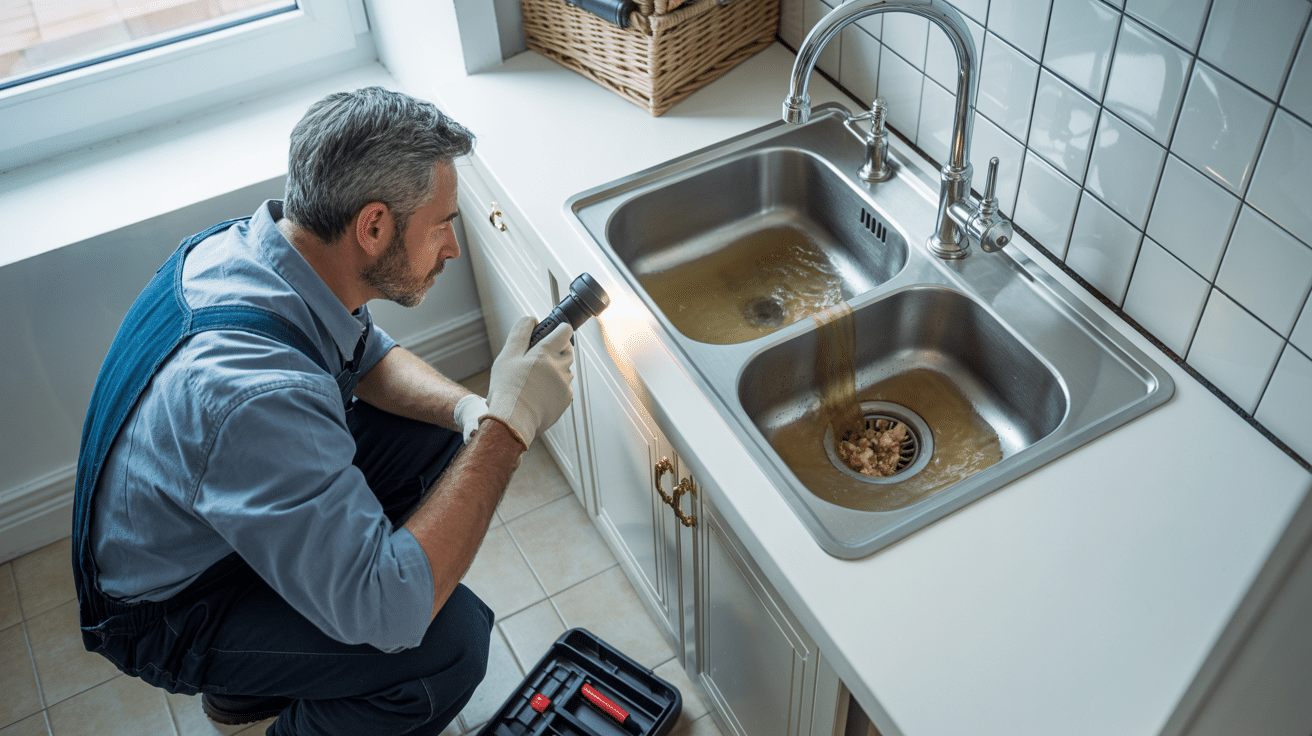
In the UK, WaterSafe and WRAS-compliance are more than just buzzwords—they’re essential for protecting your insurance, safety, and asset value. Approved methods are designed for minimal risk, lasting results, and documentation you can rely on if anyone audits or inspects.
UK-Backed Steps for Unblocking Sinks
- Warm (not boiling) water: For *metal* sinks/pipes only. Boiling water on plastic risks deformation and micro-leaks.
- Baking soda and vinegar: For older metal or robust ceramic pipes and traps only, after testing on a small section. For plastic, opt for soda alone and rinse with warm—not boiling—water ([homesandgardens.com](https://www.homesandgardens.com/solved/why-you-shouldnt-use-vinegar-and-baking-soda-to-unclog-a-drain?utm_source=openai)).
- Plunger (cup-style): Water must cover the rubber; block overflows with a cloth. *Use steady, up-and-down strokes to clear the blockage.*
- Never use coat-hangers, wires, or homemade rods: These commonly cause more damage than they fix—splitting push-fits, wedging fat further in, or puncturing seals.
UK-Approved Toilet Unblocking Steps
- Turn off the cistern or open the lid: Prevents an accidental flush flooding the floor.
- Use a flange plunger: Fits the toilet S-bend and forms a better seal than cheap cup plungers.
- Never flush repeatedly to ‘clear a blockage’: You’ll make a mess and risk backflow into the property.
- Multiple fixtures slow or backing up? Call an engineer: That’s a main stack or shared drain job—a DIY attempt can turn this into a major incident for the whole building or block.
Most property claims for water loss involve DIY attempts that breached insurance terms or failed local water compliance rules (Source: Plumbers 4U claims support team, 2024).
What Should You Do Instantly If Flooding or Overflow Starts?
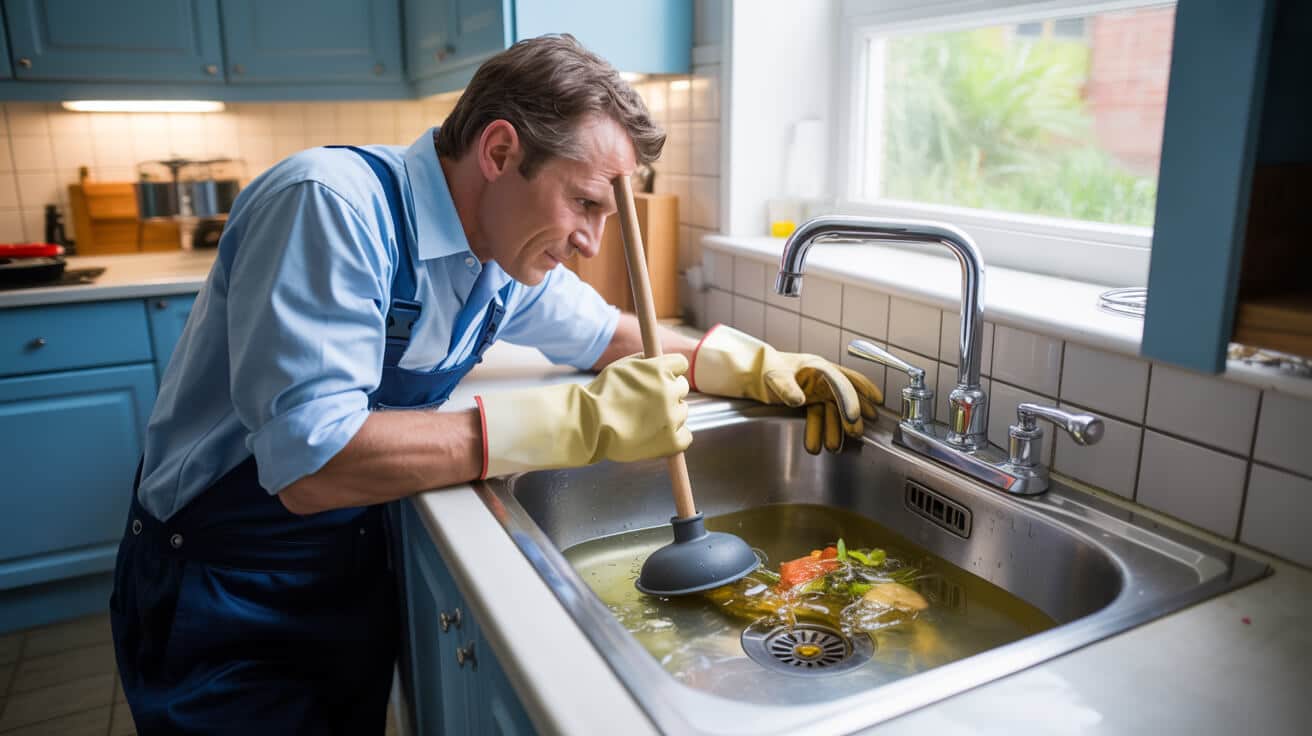
If water’s already starting to spill, you need a calm, reduction-focused plan—one that keeps evidence for insurance or regulatory paperwork and prevents more damage.
First Steps If Overflow Happens
1. Cut inflow:
Isolate water at the closest valve—sink or basin, under-unit. For toilets, turn off at the cistern or reach behind the pan for an isolator.
2. Contain the water:
Use towels, cloths or even wet-dry vacs to stop seepage into floors or cupboards. Absorb first, scoop second—never risk spills on electrics.
3. Evidence, evidence, evidence:
Photograph the standing water, the fixture, and any obvious source or fitting you can see. Note when it started and what actions you took—a must for anyone seeking coverage.
4. Do NOT keep trying:
If water overflows multiple rooms, backs up into showers or baths, or smells of contamination—stop and call an expert. Cross-contamination breaches insurance and could affect tenancy or operational certificates.
Panic makes bad situations worse. Documentation keeps you in control and protects your position with tenants, insurers, or compliance officers.
When Is It Time to Call a Pro—and How Do You Know It’s Beyond DIY?

If you’ve tried the basics—gentle plunger, safe soda flush, checked traps—and the water is still slow or backs up, it’s time to hand over to a qualified plumber. Specialist tools like CCTV, pro-grade rods, and compliance-grade chemicals do things supermarket kits cannot. Critically, these records show you took “reasonable measures” (Landlord and Tenant Act, 1985; Building Regulations Part G/H) and stay insured.
Clear Signs You Need Engineer Support
- Recurring blockages—even after several safe attempts.
- Water appearing in places it shouldn’t (under floors, behind cabinets, etc).
- Evidence of leaks, stains, or slow recovery after “clearance”.
- More than one fixture affected—indicative of stack or main waste problems.
- You’re responsible for compliance paperwork—landlords, block managers, commercial property operators, or council officers.
- Tenant reports or letting/management agreements specifying “qualified engineer only”.
A WRAS or WaterSafe-approved engineer brings more than tools—they log every step, use safe chemicals only, and issue photo-audited reports. On multi-site or high-value jobs, this protects asset value and speeds up disputes or repairs if anything does go wrong later.
How Does Plumbers 4U’s System Keep You (and Your Records) Safe—Whether You’re a Homeowner, Agent, or Facilities Manager?
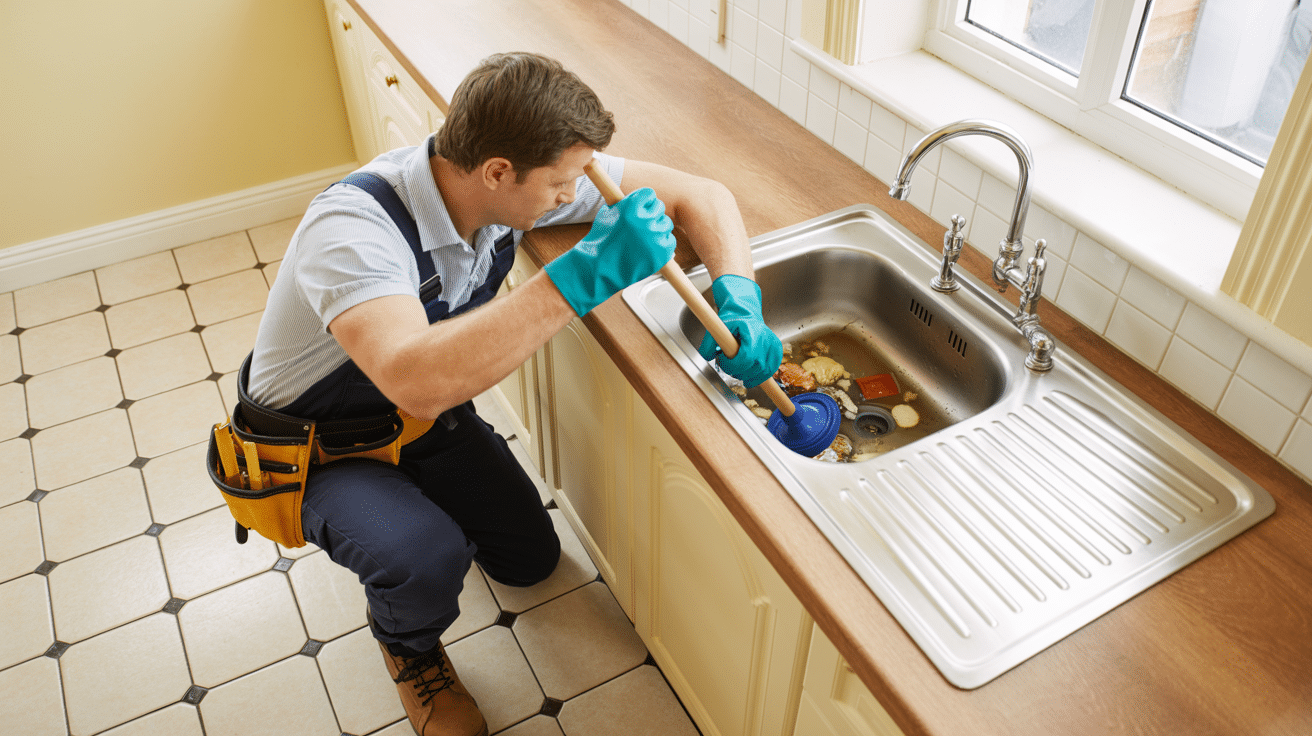
At Plumbers 4U, every job is approached stepwise—never by guesswork. All our staff hold WRAS, WaterSafe and G3 certifications, with ongoing CPD and manufacturer-specific training. We believe that “diagnosis before disturbance” saves our clients money, future stress, and keeps everyone in line with UK codes.
Our Client-First, Compliance-First Unblocking System
- Precise diagnostics before action: Whether homes, blocks, or commercial premises, we assess the *full system* before choosing any attack route.
- Only use regulation-first methods: WRAS/WaterSafe tools (cup and flange plungers, wet-vac, CCTV rods). No bleach, supermarket acid, coat-hangers, or wires.
- Full photo and video logs: All steps—before, during, after—captured for your asset file, from detached homes to HMO blocks and offices. Useful for audits, insurance, or tenant disputes.
- Transparent, fixed pricing: Every client receives a clear line-item quotation and full breakdowns, not vague “from £…” estimates.
- Handover and aftercare: User-friendly guides and “five checks before you call us again” notes—ideal for property managers or agents working at arm’s length.
Our approach: *Proper fix, properly logged—so you’re never caught out when the next inspection or claim lands on your desk*.
This mindset is why 97% of our clients rate us five stars (Trustpilot). Clean, completed jobs with full paper trail, every time.
Why Ongoing Documentation, Handover and Compliance Matter More Than Just Fixing a Block?
Whether you own your home, manage social housing, or run a commercial block, proof isn’t optional anymore. The best unblock in the world means nothing without records for insurers, tenants, or inspectors.
The Plumbers 4U Commitment to Reliable Aftercare
- Job sheets with SKU and step records: Every part and procedure logged, so managers always know what was fixed, swapped, or cleaned.
- Photos and digital evidence: Ideal for portfolio landlords or block managers juggling dozens of issues—and crucial for claims.
- Credentials on every visit: Engineers display WRAS, WaterSafe, G3, and CSCS proof—no “unapproved trades”.
- Bespoke handover: Each client receives setup, maintenance, and aftercare step-by-step, including “how to check your system” and what to do next time.
- Automated reminders for required certification: Never miss annual compliance, CP12 inspections, or block safety deadlines.
Landlords and block agents: our records keep you compliant with the Renters Reform Bill 2024, Building Regulations, and warranty providers. For commercial or council properties, this is a critical proof path—no certification means no payout, no grant, and far higher repair costs down the line.
Today’s documentation is tomorrow’s audit pass—or the difference between insurance cover and a rejected dispute.
How Does Our Approach Adapt to Homeowners, Landlords, Agents, and Commercial Operators?
Different stakeholders have radically different priorities: some want peace of mind, others ironclad compliance, some need evidence for inspections, while business operators care about operational downtime and hygiene. Our service adapts step-by-step.
Personalised Benefits by Role
- Homeowners: Clear “what’s next” guides, records for mortgage or insurance, future-proof repair logs.
- Landlords/Agents: Digital certification, dispute-resistant logs, photo evidence for compliance and rent reviews.
- Business Owners/Managers: Full documentation for commercial compliance, exposure checks, and uninterrupted operation—even during nights or weekends.
- Council/Housing Officers: Proactive scheduling, audit-friendly evidence, and all works performed to public sector codes.
Proof is protection—your audit trail, safety record, and property value is only as strong as your documentation.
By choosing a contractor that “codes before chaos”, you buy yourself security, compliance, and trust—from tenants to auditors to your own insurers.
Secure Your Peace of Mind: The Plumbers 4U Guarantee for Every Unblock—Big or Small
Blockages don’t wait for a convenient time. Whether a basin clogs during school runs, a toilet blocks at a rental on a Friday night, or a business risks downtime due to a compliance check, immediate, standards-driven action is your safest route. Plumbers 4U’s experts never rush, never cut corners, and always provide proof—for family homes, buy-to-let portfolios, commercial premises, or public buildings.
With a 97% five-star rating on Trustpilot (Trustpilot), every job is done once, done right, and fully documented—protecting you, your asset, and your reputation.
Don’t gamble with your property, budget, or compliance. Choose Plumbers 4U—the people who treat your blockages, your safety, and your paperwork like their own.
Frequently Asked Questions
Why do slow drains demand urgent action for property owners and managers?
A slow drain holds up more than just water—it signals hidden issues silently snowballing towards disruption, property risk, and higher costs. Ignoring those lingering gulps at sink or toilet isn’t minor inconvenience: insurers tracking home claims in 2024 report slow drainage costs escalate by 250% or more once a backup or overflow occurs. Hesitation not only narrows options for swift resolution but also undermines your future claim eligibility and damages trust with tenants, residents, or boards who expect action.
Every silent minute in the pipes can echo loudly on your next insurance renewal.
For homeowners, an unaddressed drain means missed chances to resolve issues with safe, documented home fixes—before water damage threatens asset value and daily life. Landlords and property managers face direct legal risks: new codes like the Renters Reform Bill treat documented delayed repairs as compliance failures, affecting everything from tenant satisfaction to regulatory exposure. Even tenants can suffer deposit deductions or liability for unreported issues.
Delaying response means insurance adjusters, warranty providers, and even letting agents may favour parties who acted promptly. The upshot: acting quickly isn’t just prudence—it’s the only way to keep all your future choices, and property value, safely in your court.
Where does speedy response generate real-world results?
- Fewer emergency callouts: Timely self-diagnosis can fix 40% of blockages (WaterSafe 2023).
- Lower loss claims: Average property payout drops from £400+ to under £100 with prompt actions (Consumer Council for Water, 2023).
- Stronger documentation: Detailed phone photos and receipts are now baseline for insurer approval—and available with every Plumbers 4U visit.
Proactive steps buy you flexibility, credibility, and cost control, long before the drama of a kitchen flood or tenant complaint.
How can you fix a blocked sink without breaching warranty or risking pipework?
Addressing a blocked sink is a game of precision, not panic. In the UK, many mainstream “quick fixes” promoted online breach WRAS and WaterSafe guidelines, inviting claim rejections or premature failures. Most property disputes and denied repairs start with unapproved chemicals, overheating plastic, or makeshift pokers—all officially flagged by plumber trade bodies as leading causes for insurance red tape.
Cut corners clearing the sink, and you’re really just cutting through your own protection.
Which steps are both safe—and insurer-aligned?
- Empty standing water: to see if it’s a local blockage or a backup elsewhere. Don’t tip boiling water into plastic pipes: 60°C max for PVC, higher risks warping, leaks, and voided guarantees.
- Start with baking soda and vinegar: WRAS endorses this for removing organic build-up, with minimal impact on seals or traps. Let it fizz, wait, and flush gently with warm (not boiling) water.
- Use a quality plunger: Ensure a good seal and slow, rhythmic pushes—never frantic force, which can crack fittings or push clogs deeper.
- Avoid metal wire or coat-hanger “snakes”: Hidden pipe scratches or punctures often don’t show leaks until weeks later, making warranty or claim support impossible.
- Two tries—then escalate.: Most insurers treat more than two failed home remedies as a sign to switch to WRAS-accredited help.
What documentation prevents future disputes?
- Photos before and after: (insurance expects visual proof).
- Receipts for materials or support: (now required for most landlord or managing agent audits).
- Job logs and reports: from Plumbers 4U—these serve as legal evidence for all stakeholders.
Taking the right steps from the start means you stay compliant, keep costs controlled, and retain full coverage under warranty, landlord lease, or company audit.
What mistakes make blocked toilets spiral from nuisance to damage—and what process actually works?
Toilet blockages can escalate fast, especially when handled with impatience or improper tactics. The urge to flush again, wield force, or tip in strong chemicals only turns a manageable issue into costly disruption. More than 60% of bathroom flood insurance cases are blamed on DIY interventions that fail WRAS or manufacturer guidelines (ABI 2023).
It’s not the stubborn block—it’s the hasty second flush that does the worst.
What’s the fail-safe protocol for restoring flow and protecting your bathroom?
- First, stop additional filling: Open the cistern lid and close the internal valve, or turn off the isolation tap below. This prevents messy overflows.
- Scoop and clear excess water.: Removing as much as possible lowers contamination risk.
- Only use a flange-type plunger or a proper toilet auger.: UK toilets are narrower than some overseas designs—incorrect tools can wedge, crack, or scratch ceramic and inner pipes.
- Never pour boiling water into the bowl: —it can shatter the porcelain, and insurance will not cover replacement due to “user fault.”
- Avoid chemical unblockers and rods: Chemicals damage seals and pipes, while rods can puncture bends, risking leaks and compliance failures.
- If water remains or rises after two careful plunges, stop.: Persistent problems or foul odours spell trouble beyond the toilet’s reach.
What’s different in multi-occupancy or commercial premises?
- Flag the problem immediately: with the facilities manager, landlord, or managing agent—UK regulation expects centralised reporting where possible.
- Don’t introduce hardware store solutions: or unauthorised chemicals in shared stacks; these can void the entire building’s insurance and breach legal duty.
Plumbers 4U engineers arrive with regulated tools, PPE, and WRAS-approved methodology, recording every step to make inspections, audits, and reimbursements seamless. Peace of mind comes from process, not panic.
When does a blockage stop being DIY—and why do repeated problems call for a specialist?
There’s a critical line between home maintenance and system-level blockages. Problems that keep returning, affect multiple fixtures, or resist DIY fixes are almost always deeper in your building’s pipework or drain stack. Tracing these requires professional tools—CCTV, pressure sensors, and acoustic locators—which uncover hidden build-ups before they become emergencies.
When sounds, smells, or slow drains travel from room to room, you’re out of home remedy territory.
Which symptoms mean it’s time to call a plumber?
- Simultaneous slow drains across two or more locations: —often a signal of a shared stack issue.
- Persistent gurgling noises and odours,: despite surface cleaning.
- Water appearing where it shouldn’t: like the bath filling up during a flush.
- Damp spots, leaks, or water marks: after failed attempts, especially new ones arising after chemicals or rods.
- New leaks or worsened pressure: after home fixes signal possible pipe damage.
What unique value do professionals bring?
- Pinpoint diagnosis: Plumbers 4U uses digital kits to locate the exact site of complex blockages, documenting the cause for insurance and management logs.
- Regulation-grade methods: WRAS-approved extraction, cleaning, and repair—not just “temporary fixes.”
- Instant legal paperwork: Before/after images, work logs, and compliance tags required by modern audits or asset management.
- Preventative assurance: Every repair now comes with advice to future-proof your system so costs don’t snowball.
By switching to professional support at the right moment, you protect your home or portfolio not just for this incident, but for every audit or sale that follows.
What legal and insurance steps are required for blocked drains or toilets in UK-managed properties?
New regulations have made record-keeping, compliance, and qualified intervention the backbone of drain and toilet upkeep—especially for landlords, letting agents, facilities managers, and residents. With the Renters Reform Bill 2024, fines and voided claims are directly tied to how quickly and how well blockages are reported, logged, and handled using recognised trades.
Today, a clean logbook and a WRAS certificate are your best defence against costly legal blowback.
What must each party do to stay covered and compliant?
- Landlords and letting agents: Respond promptly to tenant notifications, issue scheduled works, retain receipts and WRAS/WaterSafe certificates, and ensure all repairs are logged for three years minimum.
- Tenants: Report blockages immediately via email or app, keep your alerts and landlord responses as a paper trail, and don’t use unsanctioned chemicals or rods.
- Property/facilities managers: Keep collective works logs, photo documentation, and up-to-date compliance for every communal job and periodic check—regulators demand this for annual or unplanned audits.
- Commercial property owners: Ensure any contractors used hold the right cards—CSCS, G3 unvented, WRAS approval.
Plumbers 4U supplies certified digital reporting, compliance tags, and forwardable job logs with every callout, meaning less time battling paperwork or claims and more certainty when handing over to future tenants, auditors, or buyers.
How do you stop blockages from coming back—and turn plumbing headaches into lasting peace of mind?
The most expensive blockages are the ones that return—wearing down budgets, patience, and eventually structural integrity. The pattern is clear: half of all costly blockages in 2023 began as minor, recurring issues neglected in their early stages. Smart prevention pays you back, not just in repair savings but in compliance, insurability, and property reputation.
Real value isn’t the fix—it’s the record and reassurance that blockages won’t keep repeating.
Which preventive measures get consistent results?
- Instal mesh strainers in all sinks and baths: These block 70–80% of hair, debris, and grit before it ever enters the system.
- Dispose of grease, wipes, and hygiene products in the bin.: UK water authorities cite these as major contributors to domestic blockages and landlord claims.
- Plan scheduled, WRAS-certified system health checks.: Most blocked drains start as small build-ups easily cleared by professionals during an annual survey.
- Keep records for every fix and clean.: Digital job logs and receipts can mean premium reductions and minimal dispute if property is sold, let, or serviced by new managers.
- Educate all users: Whether you own or manage property, make sure every occupant or team member knows the rules for what goes down the drain.
How can professionals extend protection further?
- Offer reminders for due maintenance and digital logbooks to simplify compliance.:
- Provide written reports and photos for insurance or audits—often a requirement for coverage or portfolio management.:
- Custom-fit advice: based on your specific pipe age, layout, or compliance profile (bathrooms, kitchens, commercial stacks, and more).
Book recurring prevention with Plumbers 4U to keep blockages from even getting started. You’ll elevate property value, cut future stress, and have the logs needed for any tenant, insurer, or authority challenge.


